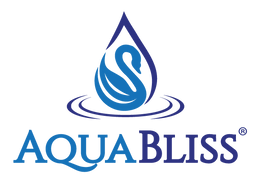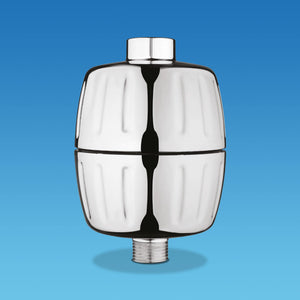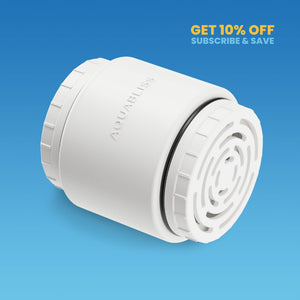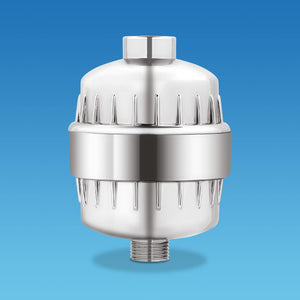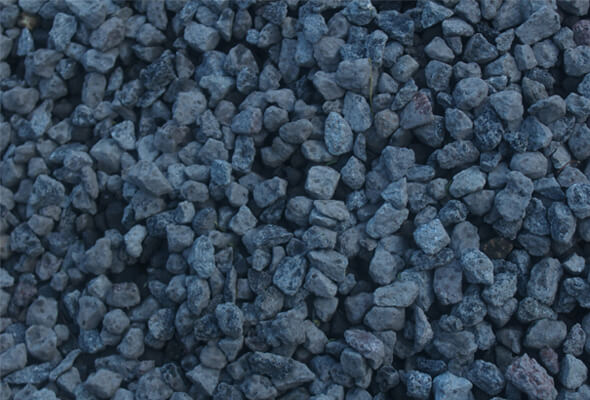Granular activated carbon has become increasingly popular as a way to filter water. This is especially true in homes where granular activated carbon filters can be installed in various ways. GAC lets your home have a healthier water supply without you needing to put too much time or effort into it.
However, before you go out and get one of these filters, you’ll have a few questions. Let’s go through each of them to see if investing in a granular activated carbon filter is right for your home. With how effective and helpful they can be, we’re sure they’re a great option for your home.
What Is Granular Activated Carbon?

One of the more important areas to focus on is what granular activated carbon actually is. It’s a type of carbon with granules ranging in size from 0.2mm to 5mm. Granular activated carbon is made from different materials, with these usually being coconut shells, coal, and wood, which are all rich in carbon.
The fact it’s so porous means it’s great at absorbing chemicals, gases, and other pollutants, making it great for water filtration. An added benefit is that the controlled burning process to produce the charcoal reduces the environmental impact of water and soil treatment.
How Is Activated Carbon Made?
Many people assume activated carbon is made in one way. This isn’t the case. Instead, there are two main ways activated carbon is made: thermal activation and chemical activation. Let’s dive into both.
1. Thermal Activation
Thermal activation is a key process in producing activated carbon, involving the controlled heating of carbon materials. Wood, coal, or coconut shells are usually the main materials used here.
Initially, the raw material undergoes carbonization at 400–700°C to remove volatile components, leaving behind a charred structure rich in carbon. Once it’s treated, it’s then heated at extremely high temperatures.
Usually, this is between 800°C and 1,100°C. During the process, the steam or carbon dioxide reacts with the char to create a porous structure by enlarging and developing the pores.
The activated carbon made through this process is defined by its extensive surface area. The activated carbon made with thermal activation is great for water purification, air filtration, and chemical processing.
2. Chemical Activation
Chemical activation is the main alternative to this, and it involves using chemical agents to improve how porous the activated carbon is. With this, raw materials like wood or agricultural waste are impregnated with activating agents such as phosphoric acid, potassium hydroxide, or zinc chloride.
It’s worth noting that heat is still used in this, but at lower temperatures. It’s usually between 400°C and 700°C. The chemicals help with dehydration and restrict tar formation, which helps to promote a well-developed pore structure.
After it’s activated, the material is washed to remove residual chemicals, yielding activated carbon with high surface area and tailored porosity. Chemical activation is the more efficient option.
Thermal-Activated vs. Chemical-Activated Carbon: Is There A Difference?
Both of the above ways to make activated carbon could lead to people wondering what the actual difference between them is. While the two have multiple similarities, there are some noticeable differences. The use of chemicals and the temperature differences are the most notable. They both have advantages and disadvantages.
With thermal-activated carbon, the benefits include:
- Offering a higher purity.
- Being a more flexible approach.
Despite that, it’s an energy-intensive approach and offers a lower yield compared to the chemical-activated approach. The chemical-activated approach also has a negative environmental impact and can leave a chemical residue afterward.
How Does Granular Activated Carbon Work?
So, how does granular activated carbon actually work? How does it filter anything out? It works by reducing the chemicals found in a water supply.
What Does Granular Activated Carbon Reduce From Water?
Speaking of the chemicals, what does activated carbon actually reduce from water? There’s quite a lot list of what it can reduce, but these can be broken into several categories:
- Chlorine
- Certain Heavy Metals
- Some Pharmaceuticals and Chemicals
- Organic Compounds
- Natural Organic Matter
- Disinfection byproducts
By reducing these, activated carbon makes water much safer to drink, bathe in, or clean with. It is also used for water treatment in multiple industries.
What Kind Of GAC Filter Systems Are There?
A granulated activated carbon filter is a relatively broad term. There are two main types of filters to be aware of. Let’s dive into both.
Whole-House Filters (Or Point Of Entry)

Installed at the water’s point of entry, a whole-house filter treats any water that enters your home. It reduces all of the chemicals, so there’s no need to worry about them when showering, drinking water, or cleaning. Cylindrical in shape, these are usually installed as a pair. This depends on the size of the house, however. For larger properties, more filters may be needed. These are arranged in sequence to make sure the whole-house filters catch mostly all of the chemicals.
Point Of Use Filters
As the name suggests, point-of-use filters are installed where you’ll be using the water. This could be a tap faucet, shower head, or anywhere else. These filters are usually installed under a faucet tap, a shower head, or a shower pipe so that water passes through a filter cartridge before making its way to a faucet or shower water.
Why Should You Consider Showerhead Filters With Granular Activated Carbon?
Countless people find themselves wondering why they should use granular activated carbon showerhead filters. They’ll even ask this when they know what kind of chemicals are found in their water supply.
These showerheads are fitted to the shower and reduce the chemicals and other pollutants often found in the public water supply. The most obvious reason to consider them is to reduce these chemicals and other pollutants.
In turn, this avoids rashes, infections, and more than a few other side effects associated with these kinds of chemicals. There are also a few other reasons why you should consider granular activated carbon, like:
- Enhancing the quality of the water by keeping positive vitamins and minerals.
- Let your skin, hair, and nails recover from any exposure to harmful chemicals.
- Make sure the water is safe for every member of your family.
There also aren’t many negatives associated with the shower heads, as they’re affordable, easy to install, and don’t negatively affect the water supply.
Other Classifications Of Activated Carbon
So far, only granular activated carbon has been highlighted. While this can be the most commonly used form of carbon used in water filters, it’s not the only one. There are several other types to be aware of. Most of these types of activated carbon are used by Water Treatment Plants.
1. Powdered Activated Carbon (PAC)
PAC is an incredibly fine form of activated carbon, which is ground down into a powder. It’s primarily directly added to wastewater. PAC is used to reduce organic compounds, taste, and odor from water. It can be used regularly or seasonally. Used by Water Treatment Plants.
2. Extruded Activated Carbon (EAC)
EAC is a cylindrical block of activated carbon that's used in water and air purification, gas absorption, and more. It's made from powdered activated carbon and a binder that are fused together and extruded into a shape.
They can be seen as pellets and are usually between 1mm and 5mm long. It’s one of the more durable types of activated carbon and is more efficient than other types. Used by Water Treatment Plants.
3. Impregnated Carbon
Impregnated carbon is a type of activated carbon that’s been treated with chemical compounds. Silver-impregnated carbon is frequently used to remove bacteria and other microbes from water. Used by Water Treatment Plants.
4. Bead Activated Carbon (BAC)
Bead-activated carbon is usually made from materials that are different from many other types. BAC works by adsorbing pollutants like organic chemicals, pesticides, and chlorine onto its surface, effectively removing them from the water. Used by Water Treatment Plants.
5. Woven Carbon
As the name suggests, "activated carbon cloth" is woven together to create a filter. It is sometimes used in water treatment plants, particularly for advanced filtration processes where a high surface area is needed to effectively remove contaminants like organic chemicals and odors.
It can be used in applications like the final polishing stages of wastewater treatment or in specialized filters to remove specific contaminants used in specialized filters. Primarily Used by Water Treatment Plants.
6. Polymer Activated Carbon
Polymer-activated carbon particles are coated with a biocompatible polymer, allowing for enhanced adsorption of certain contaminants and improved filtration efficiency; it is considered a specialized form of activated carbon used in various water treatment applications depending on the specific pollutants needing removal. Used by Water Treatment Plants.
Summing Up Granular Activated Carbon
The water supply to your home mightn’t always be as healthy as you’d think. Despite filtration media used by water treatment plants, your water can still contain high levels of chlorine, heavy metals, multiple other pollutants, and toxins.
Showering in water with these chemicals can have long-term harmful side effects on your skin and hair. It can even affect your overall health. With granular activated carbon showerheads, these pollutants are filtered out.
They’ll make your water supply much healthier, no matter whether they’re a less expensive point-of-use shower filter or a more expensive whole-house filter. At AquaBliss, we only use high-grade GAC (granular activated carbon).
AquaBliss provides multiple affordable and efficient granular activated carbon showerhead filters from which to choose. Take a look today, and you’ll be bathing in healthy water before you know it.

